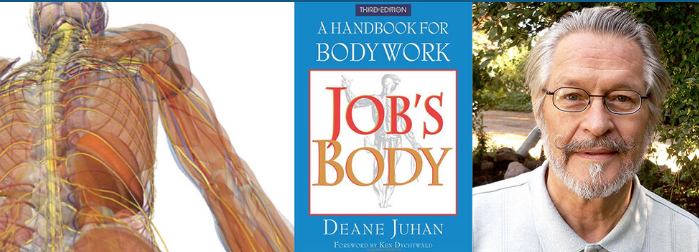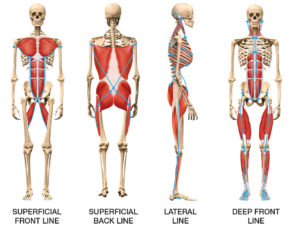In Deane Juhan’s book, Job’s Body, he talks about how the body adopts habitual patterns of holding and movement based on our jobs, social situations, general dispositions, injuries and repetitive motions. He says, on pages 220 and 221:
Over the years, it is the habitual repetition of these preferred fixations which creates the individualized tension patterns in our musculatures, and eventually even alters the thickness of our fascia and the shape of our bones in order to more efficiently accommodate a limited number of positions….Releasing these compelling fixations is of course one of the principal jobs of bodywork….Re-establishing for the individual the sense of a wide array of equally possible movements is the real significance behind the work of freeing a person from limited neuromuscular patterns.
With a new client I take time to explain a little about this concept, this central tenet of my practice as a massage therapist. I often gently guide people to become more aware of their breath, offer imagery that can help them connect with what’s happening in their body. I offer various passive movement during the session, gently encouraging release and lengthening. As the client becomes more aware of unconsciously choosing a certain posture or holding pattern, then she is able to consciously choose something else.
One of the most common examples of this is the pattern of holding that people adopt typing at computers and driving. The shoulder internally rotates, and the elbow and wrist are constantly flexed. This means that over time a person becomes unable to externally rotate the shoulder, stretch out the arm completely and put weight on the wrists in extension as one would when doing a push up. This is one reason so many people suffer from injury when they begin a rigorous exercise routine and they feel constant discomfort in their wrists, elbows, shoulders and neck.
It is always exciting to see people gain awareness of this limitation and begin gently exploring a release of those patterns, finding that over time they can regain more freedom, more range of motion, more strength and more flexibility.


